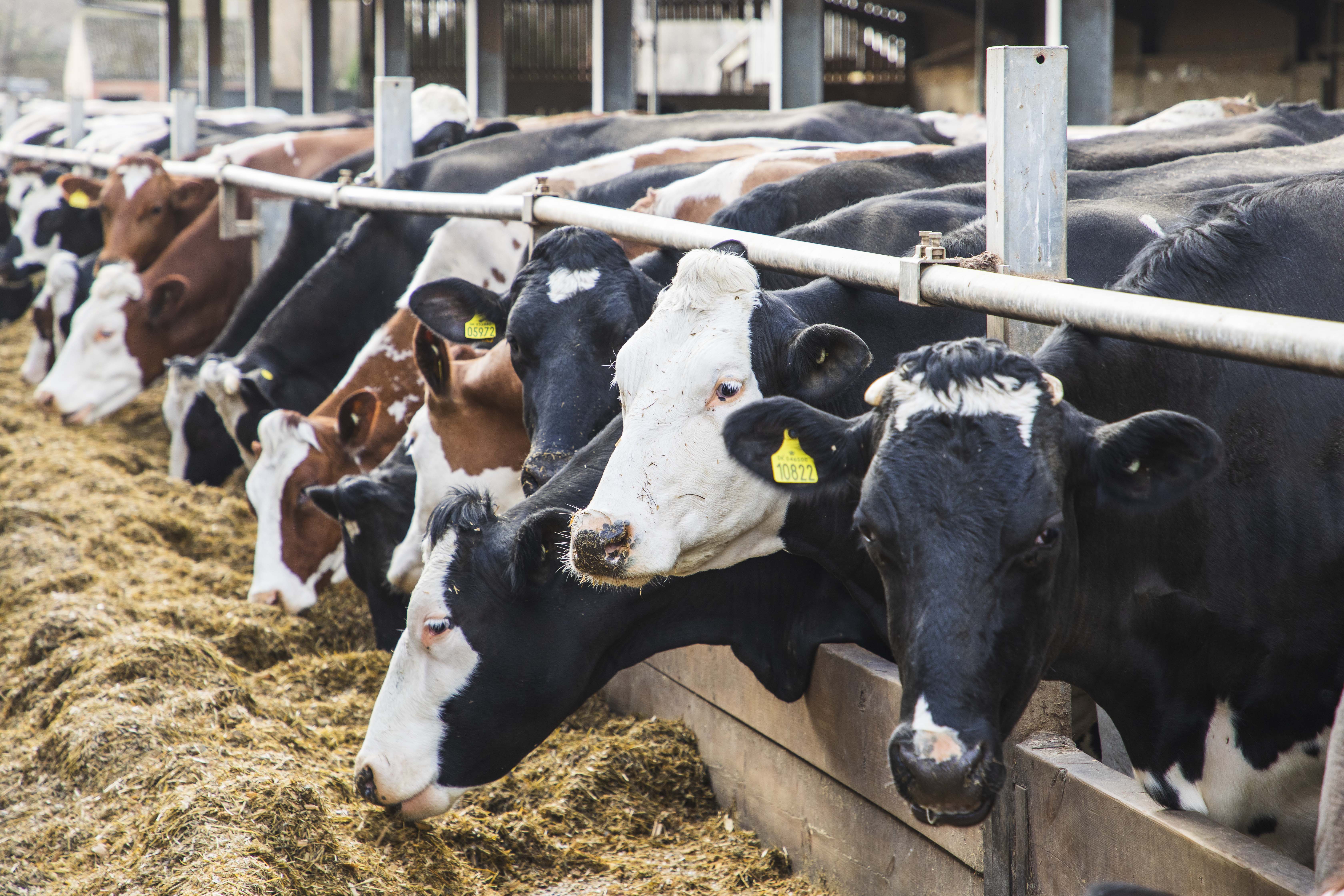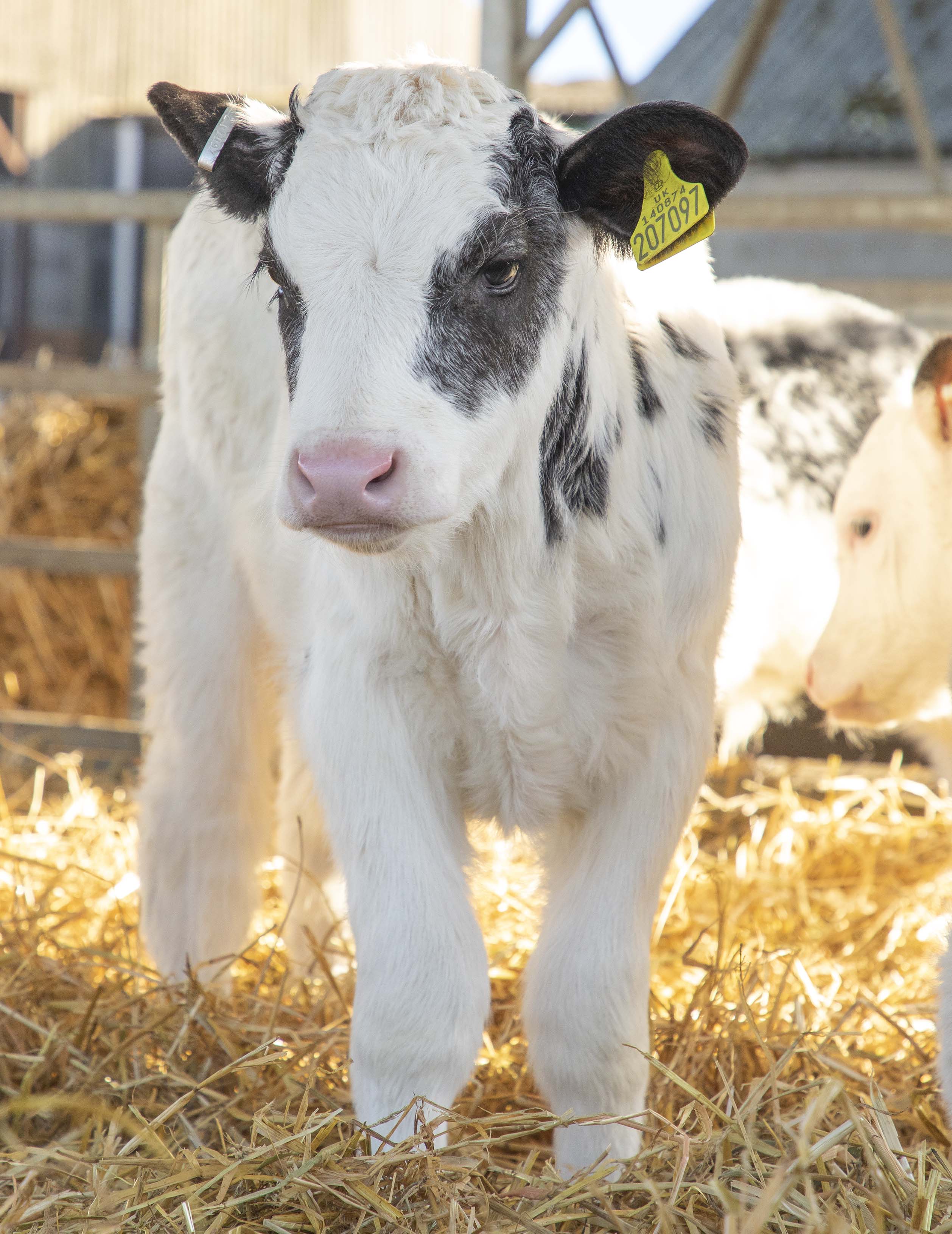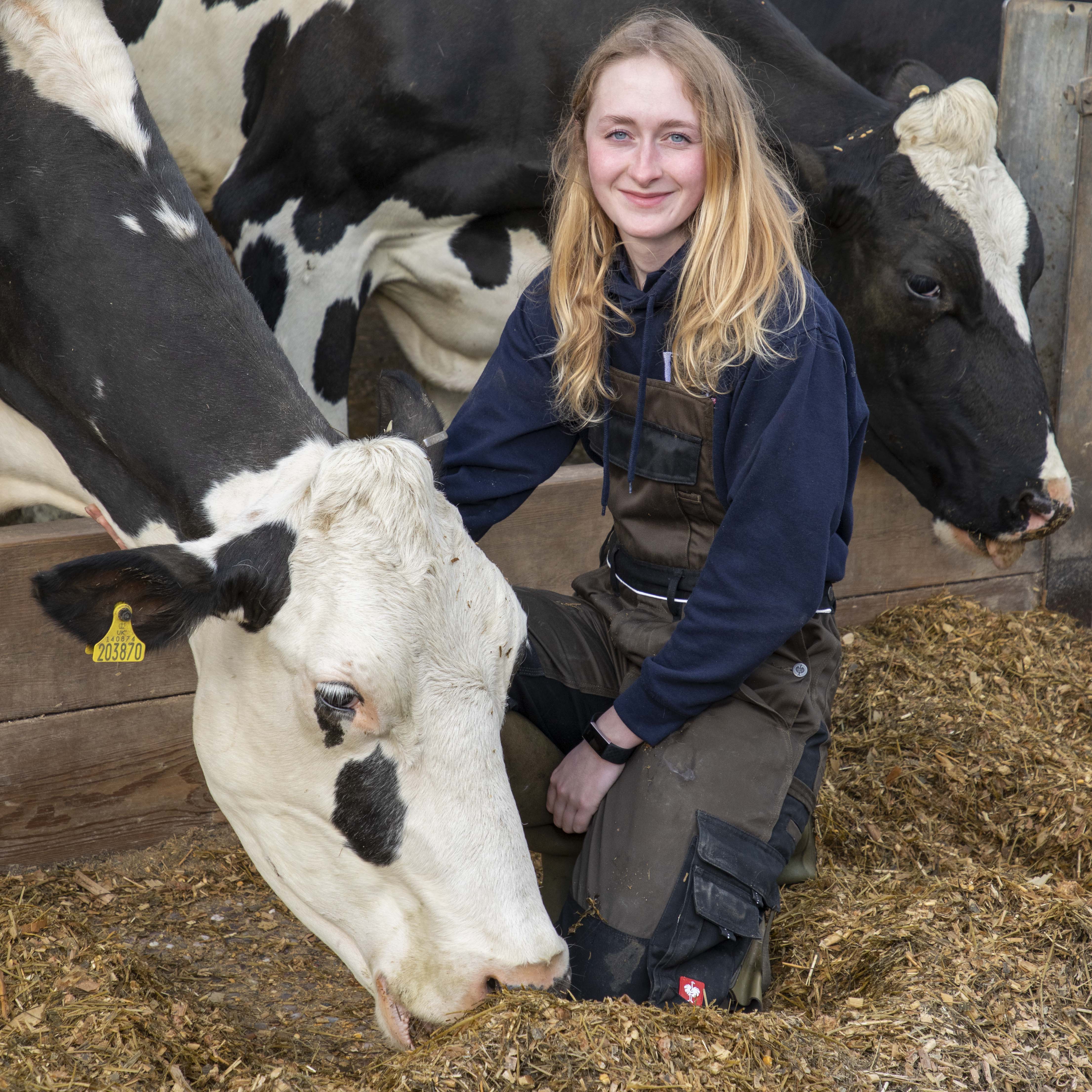
Dairy farming in Lincolnshire
This month we’re joining farmer Adam Duguid, dairymen Dirk and Glyn, trainee vet Ellie plus the udderly-wonderful Billie and Doreen as we pay a visit to Caenby Corner’s Home Farm Dairy to find out how much work goes into producing our morning pint…

Each morning the present Mrs Davis and I emerge bleary-eyed from our bed chamber and we each crave just one thing to start the day; that fabulous first cup of tea. It’s the same all over Britain, with about 165m cups of tea consumed each day, and a further 95m cups of coffee.
Around 34% of tea is consumed with milk, no sugar. A further 16% with milk and two sugars; 14% with a milk and single sugar. Only 9% of tea in the country is taken black. The statistics are a bit more complicated when it comes with coffee and all of its variations, but you can safely assume that the majority of coffee in Britain is enjoyed with milk too. Factor in milk production for making cheese and for the food industry and it’s easy to see why milk is one of the most commonly consumed food and drink products in the country; just look at the statistics below.
It’s up to dairy farmers like Adam Duguid and his team to satisfy the demand for milk, but dairy farming in Lincolnshire is comparatively rarer in comparison to arable operations.
“Lincolnshire has a strong arable bias, because the soil is so good and many regard it as a bit of a sin not to utilise it to produce crops. Plus, we have lower rainfall on the eastern side of the country. So I guess we’re slightly different, but we strongly believe in mixed farming operations.”
Adam’s grandfather, Adam senior, had an existing dairy operation in Aberdeen and moved down to Lincolnshire in the 1950s. His father Ronald joined the farm as a youngster and latterly Adam junior has become the third generation of farmer at Home Farm Dairy, near Caenby Corner.
Today, the mixed operation spans 1,700 acres of countryside North of Lincoln, with around a third dedicated to grazing for dairy cows and two thirds of the acreage used for growing cereals, potatoes and forage crops.
Over the course of about 50 years, the approximate number of dairy herds in Lincolnshire has reduced from around 400 to just 30 or 40. A long-term depreciation in the price of milk, higher input costs and economies of scale all dictate that larger dairies are more viable and so we’ve seen a move to fewer, larger dairies and in our part of the country at least, pure arable operations.
“I’d say that today the average size of a dairy herd is 150-200 cows,” says Adam. “We have 400, so we’re quite a bit larger, but still by no means a massive operation.”
The farm occupies a sweet spot in the industry whereby it can take advantage of its slightly larger size but it can also retain its high welfare standards. There are some sophisticated robotised dairy operations where everything in the parlour is automated.
But ironically, Adam says these suit smaller operations – say, a two-person farm – saving labour which can then be used on activities like farming pasture for feed. In Adam’s case, the farm employs four full time dairymen, so the use of a robotic milking parlour doesn’t release labour. Robotic parlours also make it more difficult to facilitate outdoor grazing.
Instead, a more traditional-looking operation and the mixed nature of the farm enables a closer relationship with the herd, plus the availability of slurry produced by the cows for use on the farm’s arable land, which can in turn produce maize and silage to be used as feed.
That in turn provides lower input costs for the arable constituent of the farm, with fewer fertilisers needed. We joined Dairy Manager Dirk Simpson and veterinary trainee Ellie Hallam earlier in the year as calving was just concluding. Their day begins with morning milking from around 3.30am to 7.30am. The parlour is split into two, with 25 milking stations in each, on each side. In the centre is a gangway enabling dairymen like Glyn Hamner, who was completing milking during our visit, to encourage the farm’s Montbéliardes and Norwegian Red cows – which together with a traditional Holstein breed, satisfies the farm’s intended three-way cross – to file in and then await their milking, twice a day.
Glyn wipes and disinfects each of the cows’ four teats and attaches the milking unit with its vacuum and pulsators. This also gives Glyn and his colleagues the opportunity to complete a manual inspection of each animal to check for conditions like mastitis – another benefit of semi-manual rather than robotised milking operations.
Creatures of habit, the animals are used to being milked, very comfortable with the process and it’s a relief when their teats are open and they can be relieved of anything up to 26 litres of milk a day – although the average is more like 22 litres, or 39 pints. Milking takes between five and ten minutes and Glyn has a pull cord for each station that releases food by vacuum.
Each cow is tagged, and the milking parlour automatically reads the tag’s unique ID as milking is taking place, enabling the farm’s computer to identify each animal, to record its yield, and the temperature of the milk at the teat. Elsewhere on the farm, if Dirk or Glyn need to isolate one cow, for instance, for a veterinary inspection, they can instruct the computer to ‘hold’ an animal with a particular tag number and isolate it from the herd.
After milking it’s out in the farm’s pasture for as much of the year as possible, so they can enjoy a diet of fresh grass with just the minimal amount of silage fed during the winter months. Second milking takes place in the afternoon from about 2.30pm – 5pm. Calving takes place until March ready for cows to be served again, by artificial insemination, in October.
Nowhere on the farm is there a cow more beloved than Doreen. You shouldn’t really have favourites, acknowledge Dirk and Ellie, but there’s something really charismatic about Doreen which makes her especially popular and much beloved by the team. Meanwhile, back in the parlour, there’s the small matter of 10,000 litres of milk to send off to the bottling plant each day. It’s collected from a holding tank by Arla, a cooperative of dairy farmers which was formed with the merger of Arla Foods and Express Dairies in 2003.
Arla first came to the UK in the early 1900s and brought with them Lurpac butter, then acquired dairy farms and built up their liquid milk business. It’s now owned by 10,300 dairy farmers of which 2,400 are British… and the UK is their largest market.
There’s another way to enjoy raw milk (i.e.: unpasteurised and not homogenised) with a ‘milkbot’ vending machine located at Home Farm Dairy’s farm gate. Take along your own vessel or wash and reuse one of the farm’s containers, and you can buy milk directly from the farm, with unprecedented traceability, the peace of mind of knowing about the farm’s high-welfare approach… and, of course, with the blessing of Doreen. By the time you wake up, she’ll already have had her morning milking, and is only too happy to contribute to your enjoyment of that first morning cuppa.
Facts & Figures: UK Milk Consumption…
- Milk accounted for 16.4% of total agricultural output in the UK in 2020.*
- The UK produced 15.3bn litres of milk in 2020, the highest annual figure since 1990.*
- The total number of UK dairy cows has fallen from 2,600,000 million in 1996 to 1,900,000 million in 2020, which represents a 28% reduction.*
- The UK is the thirteenth-largest milk producer in the world and is worth £4.4bn in market prices. The dairy industry provides jobs for over 80,000 people.*
- Between 1995 and today, doorstep delivery has declined from 45% to 3% of the retail milk market. Farm-gate milk prices for June 2021 were 30.4 pence per litre.*
- UK dairy farmers could fill 78,000,000 bath tubs with their annual milk production.
- The average person in the UK drinks 144 pints a year and can make 20 cups of tea from one pint of milk. 98% of the population regularly consume dairy products.
- A cow typically takes 60 hours to turn grass into milk and produces on average 39 pints of milk a day. They move it between four stomachs to do so and consume around 50kg of feed/grass a day. They also drink about 60 litres of water daily.
- Cows sleep for about 14 hours a day. They can’t sleep whilst standing up and they have 32 teeth, which is exactly the same number as humans.
* Figures from UK Parliament dairy industry statistics.







